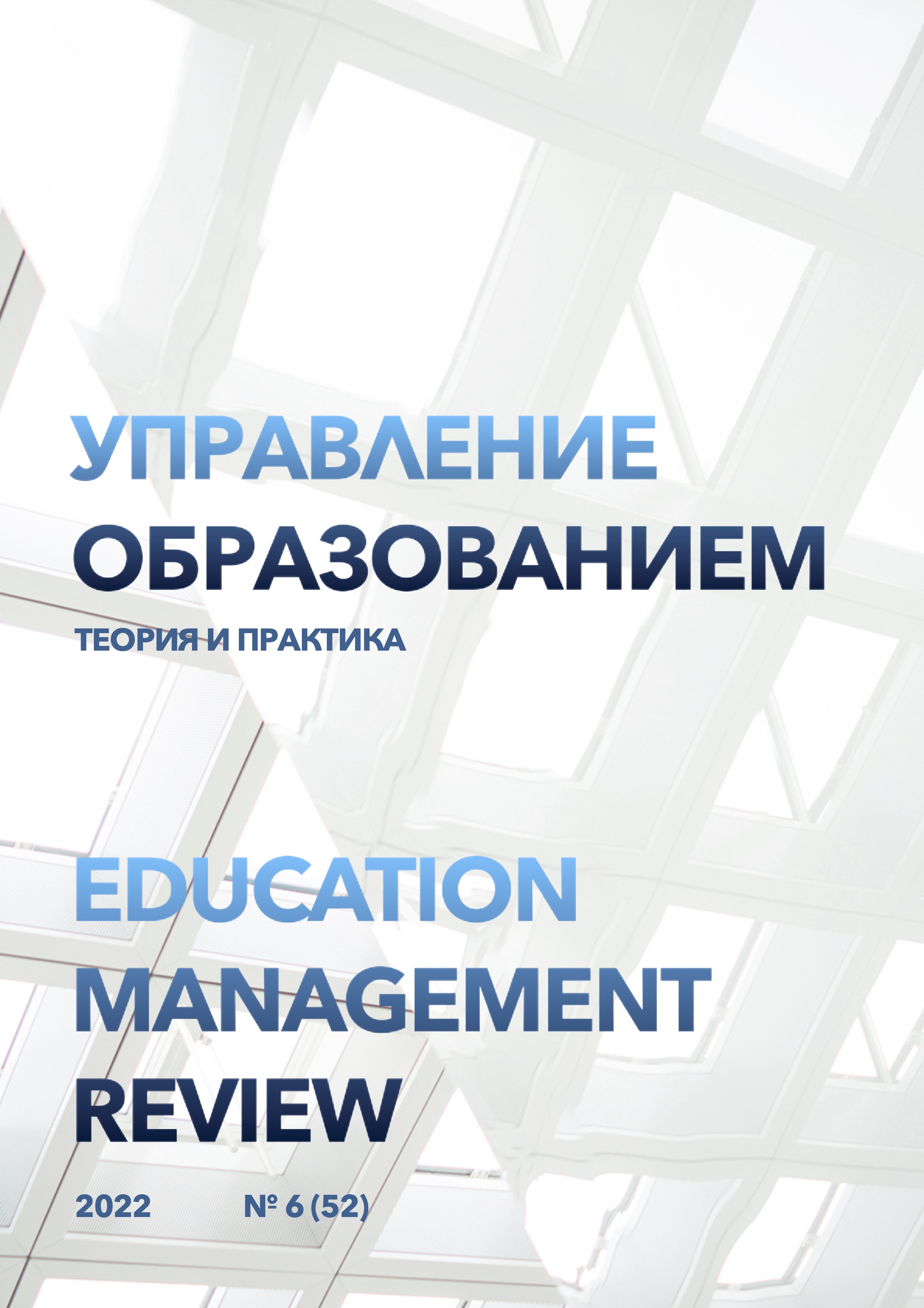Technologies of psychological and pedagogical support of students with manifestations of anxiety in the educational process
DOI:
https://doi.org/10.25726/f4328-5308-8278-kKeywords:
accompanying children, anxiety, educational process, technologyAbstract
The complex socio-economic changes that are taking place in modern society require the average person to be resistant to stressful situations, to adapt quickly and constructively to the changing conditions of existence, to be competitive, because without this progressive development of the individual is impossible. The purpose of the article is to analyze the technologies of psychological and pedagogical support of children with manifestations of anxiety in the educational process. Materials and methods. Research methods: theoretical (analysis, synthesis, generalization of scientific literature on the research problem); empirical (conversation, ascertaining and forming experiment, comparison, testing: methods for determining the level of anxiety as a personal property and as a condition; evaluation of anxiety manifestations; diagnostics of the phenomenon of social intelligence (ability to understand intentions, feelings and emotional state of a person through verbal and non-verbal expression); assessments of social and communicative competence to identify the ability to cooperate, conduct discussions and the perception of criticism; mathematical-statistical and interpretative (analysis, synthesis, systematization of the data obtained for their visual display). Statistical processing of empirical data and their graphical display was carried out using the statistical package SPSS Statistics version 17.0 and the standard package of the MS Excel program. Results. On the basis of the chosen empirical research program and the selected empirical indicators, the features of the influence of anxiety on the development of students' social intelligence in percentage terms were investigated. As a result of the analysis, it was revealed that students of professions of the "man-man" type, namely the socionomic profile of training, have an advantage in ensuring the effectiveness of the development of social intelligence as a determinant of professional formation. Students of professions such as "human-sign systems" (physical and mathematical training profile) also have a sufficient number of high indicators of research results. Regarding the respondents of professions such as "ManNature" (natural learning profile), based on a comparative analysis, it can be argued that the studied contingent has an advantage only in low indicators. The practical significance of the study is determined by the fact that the results of the study can be used by specialized specialists to improve the results of their own research.
References
Борисенко Д.В. Графический вектор развития профессиональных компетенций инженера-дизайнера // Перспективы науки и образования. 2015. №2 (14). С. 100-103.
Глинченко А.С., Дектерев М.Л., Комаров В.А., Сарафанов А.В. Сетевой учебноисследовательский центр коллективного пользования уникальным лабораторным оборудованием на базе веб-портала как элемент системы дистанционного образования // Открытое образование. 2009. № 5. С. 18-29.
Евдокимов Ю.К., Кирсанов А.Ю., Салахова А.Ш. Дистанционные автоматизированные учебные лаборатории и технологии дистанционного учебного эксперимента в техническом вузе // Открытое образование. 2009. № 5. С. 101-116.
Ершов В.А., Залкина Н.П. Компоненты структуры профессиональной компетенции // Вестник Тверского государственного университета. Серия: Педагогика и психология. 2010. N'10. С. 24-27.
Калашников А.Ф. Формирование профессиональной компетентности студентов академии физической культуры и спорта // Наука-2020. 2018. № 4. С. 50-52.
Лысых Д.В. Ответственность кадастрового инженера за ненадлежащее исполнение договора подряда на выполнение кадастровых работ // Вестник СГУГиТ (Сибирского государственного университета геосистем и технологий). 2014. №4 (28). С. 52-56.
Минзов A.C., Мельникова О.И. Применение профессиональных стандартов при обучении методам и технологиям программной инженерии в высшей школе // Открытое образование. 2018. №2. С. 27-36.
Норкина П.С., Тараненко О.И. Формирование профессиональной иноязычной коммуникативной компетентности в подготовке инженеров XXI века //Вестник Адыгейского государственного университета. Серия 3: Педагогика и психология. 2015. №1 (157). С. 77-81.
Радионовская Т.И., Баева Л.С. Особенности профессиональной подготовки морских инженеров для работы в Арктическом регионе // Вестник МГТУ. 2015. №18 (1). С. 37-40.
Ступина М.В. Формирование профессиональных компетенций будущих инженеров ИТпрофиля // Санкт-Петербургский образовательный вестник. 2018. №4-5 (20-21). С. 38-43.
Achieve (2013). The Next Generation Science Standards (NGSS): for states, by states. Retrieved from https://www.nextgenscience.org
Alemdar, M., Lingle, J. A., Wind, S. A., & Moore, R. A. (2017). Developing an engineering design process assessment using think-aloud interviews. International Journal Engineering Education, 33(1), 441–452.
Apedoe, X. S., & Schunn, C. D. (2013). Strategies for success: uncovering what makes students successful in design and learning. Instructional Science, 41(4), 773-791. https://doi.org/10.1007/s11251-012-9251-4.
Ballyns, J., Doran, R., Archer, S., & Bonassar, L. (2011). An introduction to tissue engineering using hydrogels. Science Scope, 35(1), 50–56 Retrieved from http://www.jstor.org/stable/43183104.
Batliner, M., Boës, S., Heinis, S., & Meboldt, M. (2018). Testing methodology for engineering design education. In International conference on engineering and product design education. London: Dyson School of Design Engineering, Imperial College.
Berland, L. K. (2013). Designing for STEM integration. Journal of Pre-College Engineering Education, 3(1), 22–31. https://doi.org/10.7771/2157-9288.1078.
Capobianco, B. M., & Rupp, M. (2014). STEM teachers’ planned and enacted attempts at implementing engineering design-based instruction. School Science and Mathematics, 114(6), 258–270. https://doi.org/10.1111/ssm.12078.
Dyer, J. H., Gregersen, H. B., & Christensen, C. (2008). Entrepreneur behaviors, opportunity recognition, and the origins of innovative ventures. Strategic Entrepreneurship Journal, 2(4), 317–338. https://doi.org/10.1002/sej.59.
Ewalt, K., Dortch, B., & Russell, V. (2015). See-less seagulls: planning for an interdisciplinary STEM unit. Science Scope, 39(2), 18 Retrieved from http://www.jstor.org/stable/43691334.
Moore, T. J., Tank, K. M., Glancy, A. W., & Kersten, J. A. (2015). NGSS and the landscape of engineering in K-12 state science standards. Journal of Research in Science Teaching, 52(3), 296–318. https://doi.org/10.1002/tea.21199.
Purzer, S., & Quintana-Cifuentes, J. G. (2019, April). Six ways of integrating science and engineering: What do students learn from each? Paper presented at the Annual Conference of NARST, Baltimore, MD.
Purzer, S., Moore, T., Baker, D., Berland, L. (2014). Supporting the implementation of the Next Generation Science Standards (NGSS) through research: engineering. Retrieved from https://www.narst.org/ngsspapers/engineering.cfm
Radcliffe, D. (2015). A tale of two STEMS. Prism, 25(4), 52 Retrieved from http://www.aseeprism.org/last-word-dec-3/.




